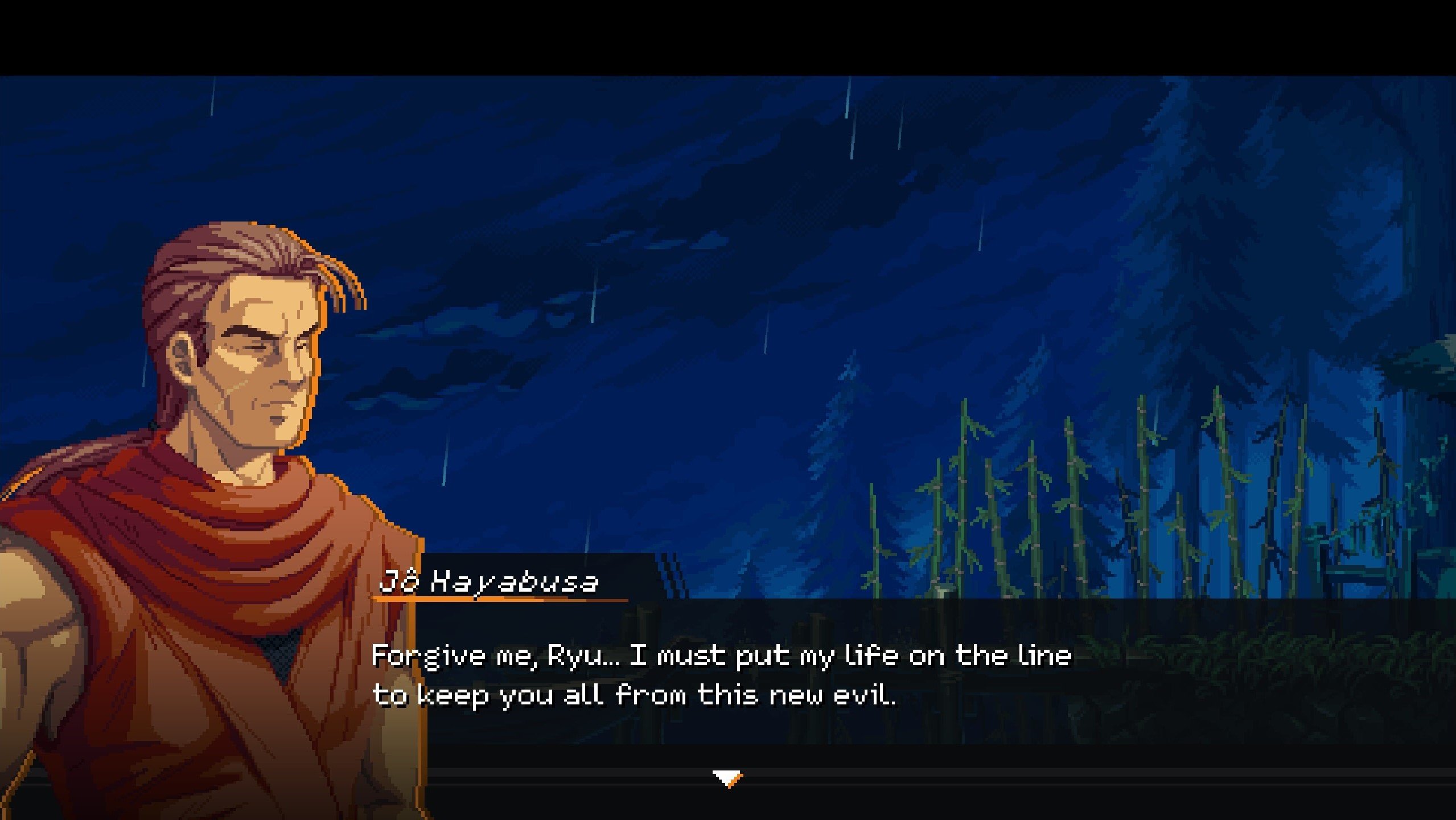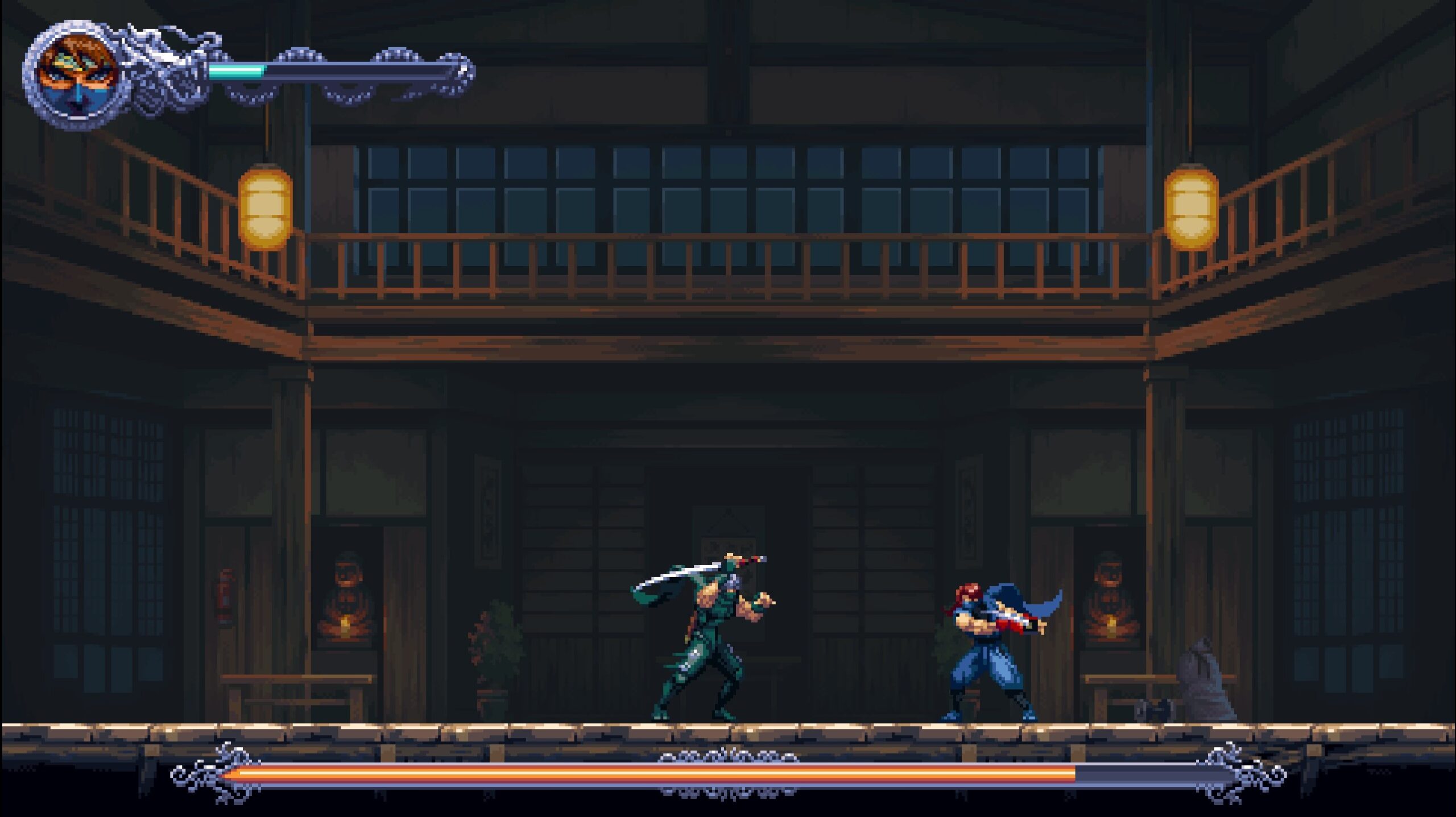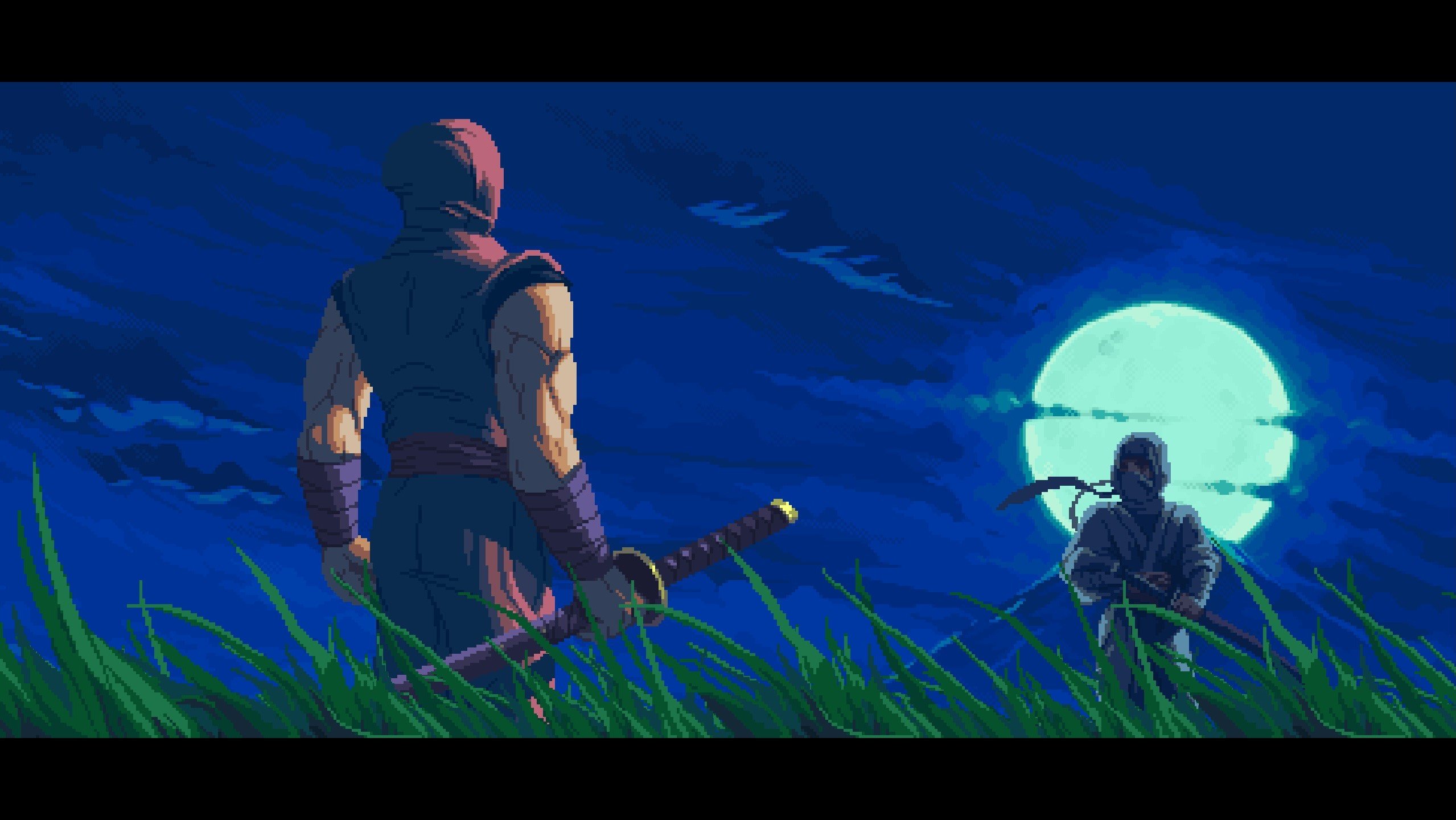Ninja Gaiden is a series I’ve long avoided for one main reason: I’m terrible at platforming. Tough enemies with tricky attack patterns? Those I can handle. I’ve played my fair share of FromSoft games and I’m good at banging my head against the wall until I learn those attack patterns front to back and eventually beat them. Ask me to do some precision jumps while fending off kunais and demon orbs, however, and I turn into a lost sheep. For that reason, I was nervous starting up Ninja Gaiden: Ragebound for the first time.
Here we go, I thought. Time to suffer.

And suffer I did. For the first hour, I struggled with even the most rudimentary tasks. Jumping off a wall while dodging a kunai, while trying to aim my sword strike at the enemy who was throwing said kunai was aggravating. It even resulted in me losing a quarter of my health as I tried to nail down the timing. Look, I realize that I sound completely inept here, especially for someone who’s supposedly been playing video games since she was a wee child. Each of these things alone, I can do. Put them all together, though, especially when some degree of platforming is involved, and I flounder.
Eventually I got the hang of it and beat the prologue stage of Ninja Gaiden: Ragebound. And then the game truly began, as I learned new moves that would make the game more challenging, and also more pleasurable the more I committed myself to it.
Ragebound’s story begins with iconic ninja badass Ryu Hayabusa going to America to fulfill his father’s dying wish. Even as his village gets invaded by demons, he entrusts its protection to young ninja and newcomer Kenji Mozu. The bulk of the game features Kenji as its main protagonist, who moves exactly the way you’d expect Ryu to, but with a few flourishes.

You see, as the village gets invaded, you’re forced to contend with the rival Black Spider Clan as well, who’s trying to seal the demons away into a knife — a plan that inevitably backfires. As a result, Black Spider Clan kunoichi Kumori’s soul gets sealed away within Kenji’s body, and both your abilities come together to create a ninja combat experience that I’m sure will please series fans.
On his own, Kenji is great. His sword strikes are fast and fluid, and I loved that almost every enemy in the game dies in one hit. Their attack speeds and patterns may vary, which means that much of the challenge lies in how well you can read your enemies and how fast you’re able to react to them. Environmental obstacles pose a threat too, of course — a spiked pit means you’ll need to time your jumps and ceiling climbs with that flying kunai to avoid getting hit while making your way to your foe. Failing to work around those environmental obstacles (as I often did) will mean death, more often than not.
To make things more challenging, Ragebound loves throwing a ton of enemies at you too, even when there are no environmental tricks to contend with. The game then becomes a dance of jumps and skips as your eyes dart around the screen to try to keep track of what everyone’s doing, while you slowly slice your way through them.
When you do come across the occasional beefy dude who needs more than one hit to go down, that’s where Ninja Gaiden: Ragebound‘s Hypercharge mechanic comes in. By killing colored aura enemies or hitting a Hypercharge orb, Kenji’s next attack gets Hypercharged, allowing you to slash through more powerful enemies. This only lasts for one attack though, so make sure you don’t waste it. The nice thing about Ragebound is that it’ll never fail to throw weak enemies with the Hypercharge aura at you when the situation calls for it, even if it does telegraph what’s coming up next.
Kumori herself is a delightful addition to the game, as she gives you access to her kunai and other ranged abilities like a sickle that you can throw out in combat. As you continue playing, Kumori gets access to Ragebound Arts, which are basically like ultimate abilities that can do a variety of useful things like restoring your health (critical especially for someone like me) or clearing out all enemies in the area. These Arts are extremely powerful and when I got access to them, I felt like I could finally breathe again. After so much struggling and feeling like an utter failure, Ninja Gaiden Ragebound has seen fit to offer me, a mere mortal, a crutch that I can lean on.

Don’t get me wrong. There’s still plenty of challenge to be had here. Crutches won’t fix my bad platforming skills, after all, but it does at least give me a little bit more margin for error, which makes the game feel less painful and frustrating.
I made full use of these skills too, especially as I went up against the harder bosses and enemies Ragebound had to offer. Thankfully, I can report that the difficulty curve does ease up the more you play. After all, practice makes perfect, and the more you beat your head against the wall, the more numb you get. Which is a good thing… I think? Anyway, suffice to say that I did eventually start to enjoy myself the more I played. It helps that Ninja Gaiden Ragebound is such a stylish game too, with beautiful pixel art graphics and striking designs that really pop.
My first playthrough of Ninja Gaiden: Ragebound took around 11 hours, though I suspect savvier players will be able to beat it in much less. Despite the short runtime, there’s plenty of reason to go back to it. Your completion time is scored, there are tougher optional challenges to take on even after the credits roll, and there’s even a hard mode for all the masochists out there. Now that I’ve played through my first ever Ninja Gaiden game to completion, I’ve accepted that it may not necessarily be my thing, but I can certainly appreciate its unapologetic commitment to its bloody, glorious vision.
A review code for the game was provided by the publisher. You can check out our review policy here. Reviewed on PC.


